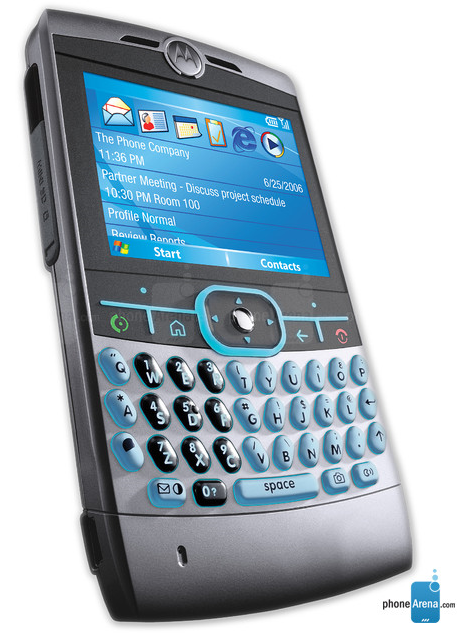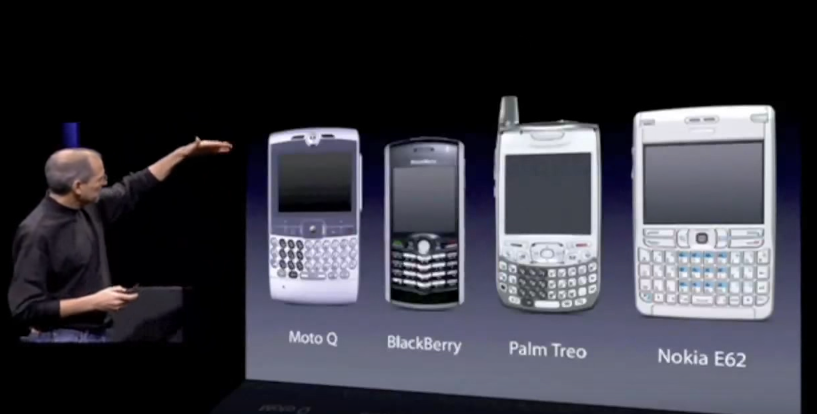One of Steve Jobs' usual suspects on January 9th 2007 was the Motorola Q

The Motorola Q, launched by Verizon in 2006
Bell Mobility launched the GSM version of the phone on November 13th 2006, and was the first carrier to offer the device in black. On June 29th, the Apple iPhone was launched as an AT&T exclusive. But Motorola wasn't looking to compete with the iPhone at that point. The main goal was to take on BlackBerry. Just one month after the iPhone was released, the Motorola updated the Q and launched the Motorola Q9. In July, the Motorola Q9h launched in Europe and in the U.S. via Bell Mobility. One month later, the Motorola Q9m was made available at Verizon.
The Motorola Q9 featured a 2.4-inch display with the same 320 x 240 resolution. A single-core 325MHz CPU was under the hood with 96MB of RAM and 250MB of native storage inside. An 8GB microSD slot was available for those seeking additional storage. On back was a 2MP camera, and it was all powered by an 1170mAh battery. Windows Mobile Standard 6.0 was pre-installed.
By November 2009, Verizon was desperate for an iPhone competitor. The year before, the BlackBerry Storm launched half baked, leaving Verizon without an answer to AT&T's exclusive. By then, Motorola had the answer in the Android powered Motorola DROID. And while Motorola gave the Q another shot with the Q11 in 2008 (which added support for Wi-Fi), the ball game was over. Touch screen smartphones were taking over, and phones like the usual suspects mentioned by Steve Jobs were taking their last breaths.

Steve Jobs introduces the usual suspects on January 9th, 2007. The Motorola Q is first on the left










Things that are NOT allowed: